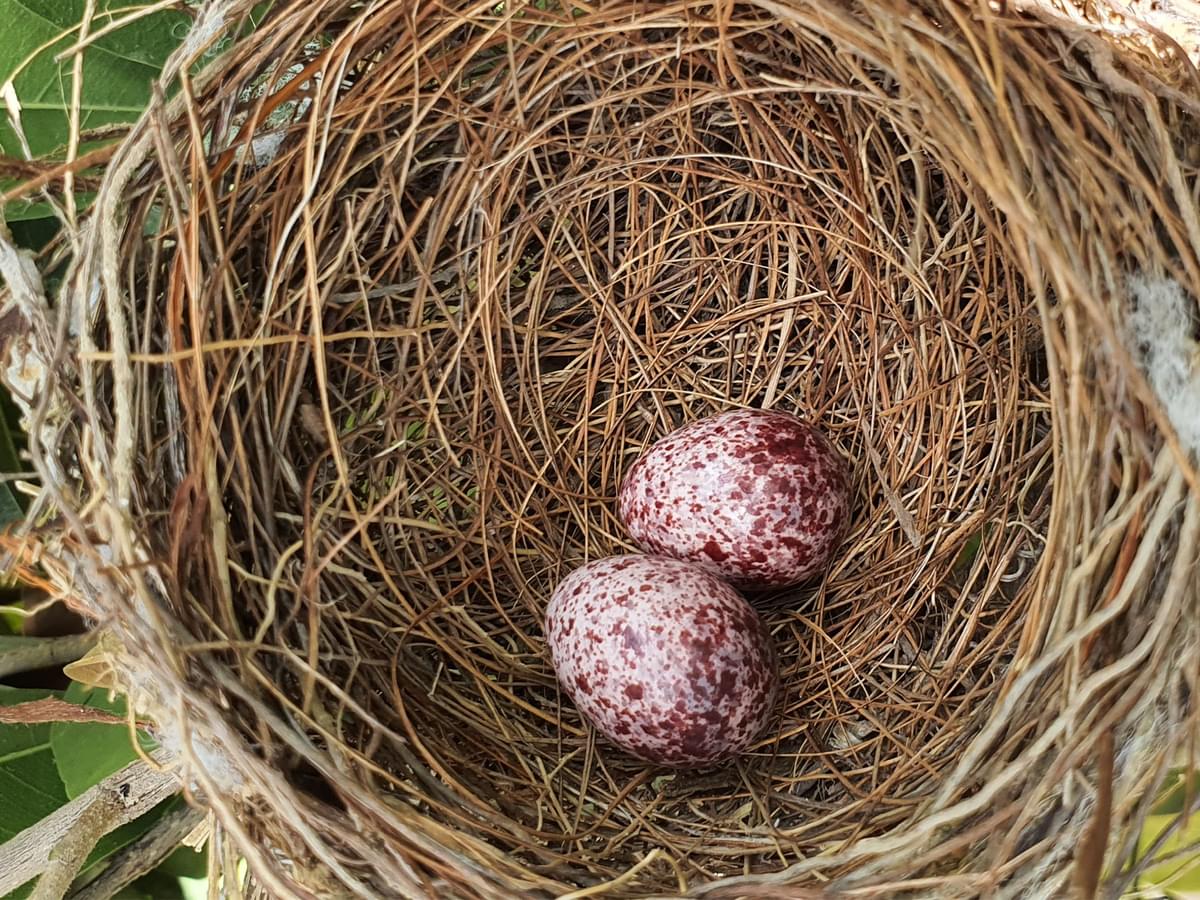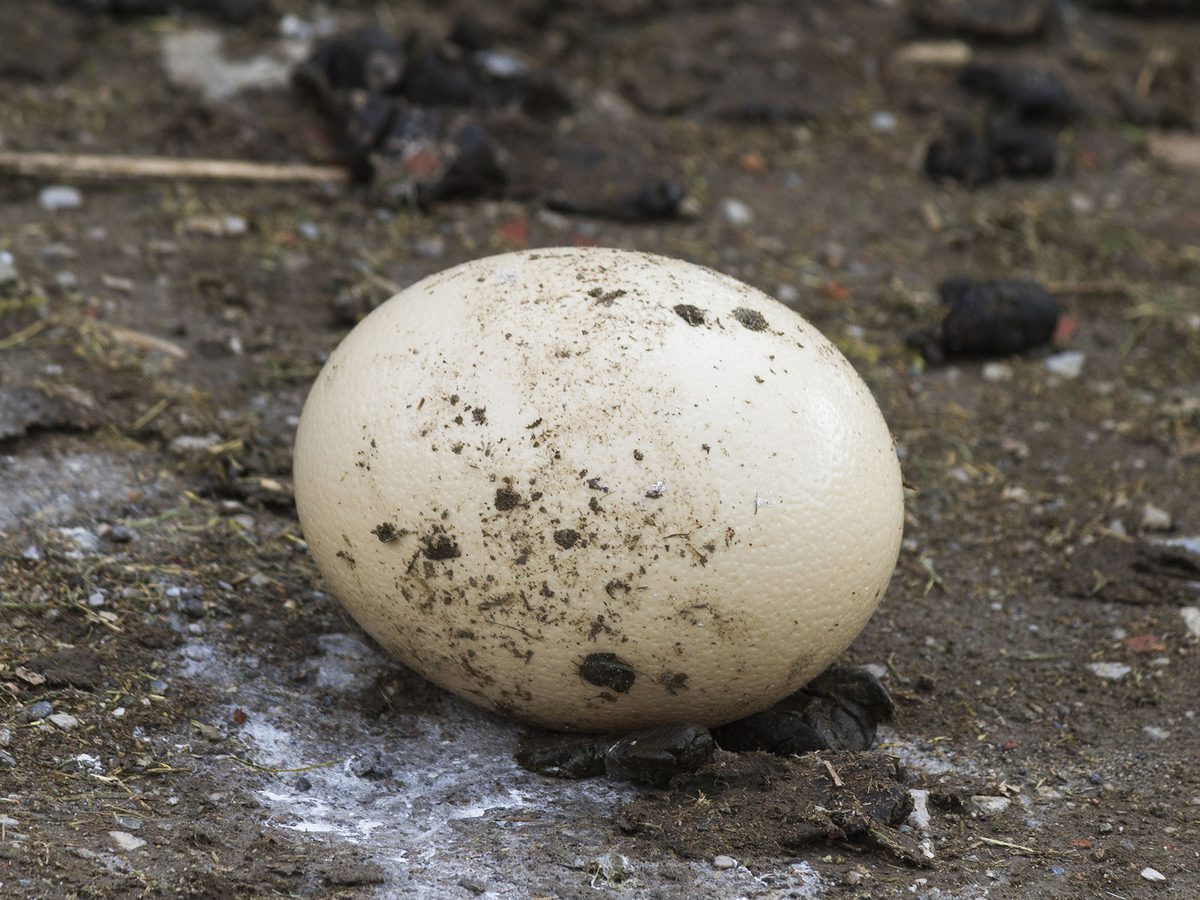Egg Laying and Incubation

Birds are an incredibly diverse group of animals that have conquered almost every habitat on Earth. One thing every avian has in common is their origin in the egg. Although the shell’s size, shape, and color may vary, every bird develops within these remarkable life-support structures.
For a baby bird to develop from a tiny embryo into a fully formed chick, the egg must be carefully and dutifully nurtured. Although only the female bird can produce and lay eggs, their successful development may rely on both parents.
In this guide, we’ll dive deeper into the fascinating world of bird eggs. Read along to learn how they are produced, what they need to develop, and why they come in so many different shapes and sizes. Let’s get cracking!
Egg-Laying Mechanisms and Patterns
The Miracle of Egg Creation
The creation of every bird’s egg is a complicated process that occurs within the female’s reproductive tract. These are the major milestones in egg production:
- Female birds already have all their egg cells when they first hatch.
- These cells, known as ova, are found in the ovary.
- Developing ova are surrounded by yolk, which contains the nutrients required by the growing embryo.
- The ovum is released into the oviduct during ovulation.
- The ovum is fertilized (if sperm is present) in the first section of the oviduct, known as the infundibulum.
- The egg then passes to the next section, known as the magnum. Here, it is covered in the albumen, which provides protein and water.
- Finally, membranes are laid down around the albumen, and a layer of calcium carbonate is added to form the shell.

Nest of a Northern Cardinal with two eggs
Species-Specific Patterns
While all birds lay eggs, the number of eggs they produce during any given year is highly variable across the species. Some domestic chicken breeds can lay over 300 eggs per year, and many wildfowl and groundbird species produce impressive clutches of over a dozen eggs.
In contrast, slow breeders like Albatrosses lay just one egg every second year, and Ground Hornbills produce a single small clutch every third year.
Most birds produce a single brood each year, usually in the spring or summer. However, many species can nest fast enough to raise a second brood before conditions become unsuitable. Some species produce several broods in quick succession, while others can nest at any time of the year.
Most species lay their eggs in the spring so their chicks can hatch and fledge before the seasons change and food becomes scarce. This is especially important for migratory birds that must return to their overwintering grounds. However, some resident birds, like Great Horned Owls, begin nesting in the winter because their chicks are slow to mature.

A Female Great Horned Owl sitting on her nest
The Art and Science of Incubation
Warmth, Humidity, and Love
The embryo will not develop unless the egg has access to oxygen and sufficient humidity. Crucially, the egg must be maintained within a specific temperature range, usually between about 97 and 102 degrees Fahrenheit or 36-39°C.
Keeping the eggs within such a narrow range requires shelter from the sun and elements and the transfer of heat from the parent bird. One or both parents (in shifts) incubate the eggs, transferring warmth from an area of bare skin known as a brood patch.
Some birds transfer heat to their eggs with their feet. The Emperor Penguin, for example, incubates its single egg on top of its webbed toes in a standing position.
Rotation and Aeration
There’s more to incubating an egg than just keeping it warm. Birds also rotate their eggs regularly throughout the day and night. This critical behavior may serve a few functions, such as ensuring an even supply of protein-rich albumen to the growing embryo, maintaining an even temperature throughout the egg, and preventing the egg's contents from sticking to the shell.
A bird’s egg may seem like a sealed structure, but the developing embryo has to breathe to stay alive. The shell is actually covered in thousands of minute pores, which allow the entry of oxygen and the release of carbon dioxide.

A Sandhill Crane. One or both parents (in shifts) incubate the eggs, transferring warmth from an area of bare skin known as a brood patch
Challenges and Predators
Nest Robbers and Climate Woes
Carefully incubating and rotating eggs for weeks or even months exposes adult birds and their clutch to many dangers. Let’s take a look at some of the major risks birds and their eggs face during this crucial time.
Predation
Many predators feed on incubating birds and their eggs, and mortality can be very high, particularly in ground-nesting birds like ducks.
Brood Parasites
Some birds, like Cuckoos, Cowbirds, and Whydahs, have evolved to lay their eggs in other bird species’ nests. These birds may destroy the host’s eggs, or the parasite hatchling may push them out of the nest.
Weather
Incubating adults and their eggs are at the mercy of extreme weather events. The parent bird must protect its eggs from extreme cold and heat if they are to develop, but storms can destroy their chances by blowing their nests loose or crushing them when trees topple or vegetation is carried by the wind.
Trampling
Many ground-nesting birds lay highly camouflaged eggs that are well hidden from predators. Unfortunately, this puts them at great risk of trampling by humans (especially in off-road vehicles) and large animals like cattle and sheep.
Survival Strategies
Birds use a variety of methods to protect their eggs and improve their chance of successfully raising their young. Continue reading to learn about some of these clever and daring survival strategies.
Nest site selection
Choosing the right place to build a nest and lay eggs is one of the most important decisions that breeding birds make. Most species select sites that are relatively inaccessible to predators and sheltered from the worst of the elements. Many birds build their nests among very thorny vegetation to deter predators, and some even choose spots near wasps and other aggressive insects that may attack potential enemies.
Camouflage
Cryptic species like Nightjars and various groundbirds hide in plain sight by relying on excellent camouflage. Many ground-nesting birds create little more than a scrape in the ground, so their nests are difficult to spot. The incubating adults and their eggs often blend into their surroundings so well that they’re virtually invisible to predators.
Active defence
Some birds don’t hesitate to take the defensive when predators approach their nest. Large species like Swans and Eagles are formidable opponents for nest predators, but even small birds can be incredibly courageous when threatened by a predator or a person.

Cryptic species like Nightjars and various groundbirds hide in plain sight by relying on excellent camouflage
Egg Anomalies and Variances
Colors, Sizes, and Shapes
Bird’s eggs come in a fantastic array of shapes, sizes, textures, and colors. Continue reading to learn more about their diversity and why different eggs benefit certain species.
Shape
The typical egg is roughly elliptical, with one end more pointed than the other. However, some eggs are almost spherical, particularly in cavity-nesting species like some Owls, Kingfishers, and Woodpeckers. Some cliff-nesting species like Guillemots and Murres lay remarkably pointed eggs. This shape is thought to prevent their eggs from rolling and potentially falling off the nest site.
Color
Many birds lay plain white eggs, but songbirds and many ground-nesting species produce eggs that can be quite colorful and variably patterned. Common colors include blue, green, and various shades of brown. Speckled, blotched, and streaked eggs often blend in perfectly with the ground or nest to camouflage them from predators.
Size
Birds vary tremendously in size, and so do their eggs. The smallest Hummingbird species produce coffee-bean-sized eggs that weigh less than a gram, while the Ostrich produces massive eggs weighing over three pounds and measuring about six inches long!

The Ostrich produces massive eggs weighing over three pounds and measuring about six inches long
Incredible Edible Egg?
Eggs are not only important for birds. Chicken eggs, in particular, are a popular food and an important source of protein all over the world, with estimates putting the average global consumption at over 150 eggs per person per year.
While these eggs are farmed commercially, the harvest of wild bird eggs for consumption is still commonplace in many parts of the world. This practice is still popular in places like Alaska, Iceland, and the Faroe Islands, where it has a rich tradition spanning hundreds or even thousands of years.
In most developed regions, harvesting eggs for consumption or collection is illegal and frowned upon for ethical and ecological reasons.

Chicken eggs, in particular, are a popular food and an important source of protein all over the world
Conserving and Respecting Breeding Grounds
Safe Spaces for Future Generations
Birds need protected spaces where they can lay their eggs and raise their young without disturbance. The conservation of important nesting areas and natural habitats is so important for the survival of birds, and we can all play our part by creating safe spaces around our homes and communities and by supporting local and international conservation initiatives.
Helping Hands: Conservation Efforts
There are several ways that we can help to protect breeding birds and their young. In the most extreme cases, eggs are collected from the nests of endangered species and carefully reared in captivity to minimize the chance of nest failure or predation. Sadly, some of the most endangered birds in the world exist only in captivity, and captive breeding programs represent their only chance at survival.
However, most birds benefit from less drastic approaches. Conserving natural habitats and ecosystems is the best way to protect the birds that live and breed in them. Preventing the development and limiting access to vital nesting sites are important strategies for protecting species with localized breeding areas.

Pair of Ospreys. Birds need protected spaces where they can lay their eggs and raise their young without disturbance
Summary
The egg is a remarkable structure and a vital stage in the life of every bird on the planet. These complex and often beautiful vessels have evolved to nurture the growing embryo outside of the body, yet they still require dedicated care to survive and hatch into free-living baby birds.
The sheer diversity of egg shapes, colors, and sizes makes their study a fascinating side of the birdwatching hobby. However, responsible birdwatchers always show nesting birds the respect they deserve and leave them in peace during this crucial phase.
